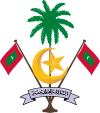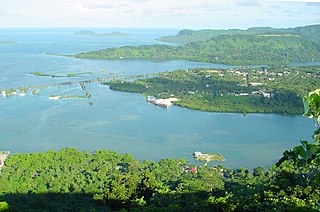
The economic activity of the Federated States of Micronesia consists primarily of subsistence agriculture and fishing. The islands have few mineral deposits worth exploiting, except for high-grade phosphate. The potential for a tourist industry exists, but the remoteness of the location and a lack of adequate facilities hinder development. Financial assistance from the US is the primary source of revenue, with the US pledged to spend $1.3 billion in the islands in 1986–2001. Geographical isolation and a poorly developed infrastructure are major impediments to long-term growth.

Haiti is a free market economy with low labor costs. A republic, it was a French colony before gaining independence in an uprising by its enslaved people. It faced embargoes and isolation after its independence as well as political crises punctuated by foreign interventions and devastating natural disasters. Haiti's estimated population in 2018 was 11,439,646. The Economist reported in 2010: "Long known as the poorest country in the Western hemisphere, Haiti has stumbled from one crisis to another since the Duvalier years."
The economy of Liberia is extremely underdeveloped, with only $3.222 billion by gross domestic product as of 2019, largely due to the First (1989–1996) and Second Liberian Civil War (1999–2003). Liberia itself is one of the poorest and least developed countries in the world, according to the United Nations.

The economy of Palau consists primarily of subsistence agriculture and fishing. The government is the major employer of the work force, relying heavily on financial assistance from the United States. The population enjoys a per capita income of more than twice that of the Philippines and much of Micronesia. Long-term prospects for the tourist sector have been greatly bolstered by the expansion of air travel in the Pacific and the rising prosperity of leading East Asian countries.
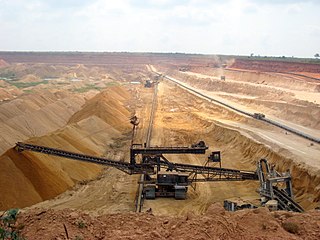
The economy of Togo has struggled greatly. The International Monetary Fund (IMF) ranks it as the tenth poorest country in the world, with development undercut by political instability, lowered commodity prices, and external debts. While industry and services play a role, the economy is dependent on subsistence agriculture, with industrialization and regional banking suffering major setbacks.
The International Development Association (IDA) is a development finance institution which offers concessional loans and grants to the world's poorest developing countries. The IDA is a member of the World Bank Group and is headquartered in Washington, D.C. in the United States. It was established in 1960 to complement the existing International Bank for Reconstruction and Development by lending to developing countries which suffer from the lowest gross national income, from troubled creditworthiness, or from the lowest per capita income. Together, the International Development Association and International Bank for Reconstruction and Development are collectively generally known as the World Bank, as they follow the same executive leadership and operate with the same staff.
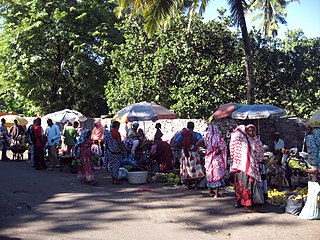
The economy of the Comoros is based on subsistence agriculture and fishing. Comoros has inadequate transportation links, a young and rapidly increasing population, and few natural resources. The low educational level of the labor force contributes to a subsistence level of economic activity, high unemployment, and a heavy dependence on foreign grants and technical assistance. The Comoros, with an estimated gross domestic product (GDP) per capita income of about $700, is among the world's poorest and least developed nations. Although the quality of the land differs from island to island, most of the widespread lava-encrusted soil formations are unsuited to agriculture. As a result, most of the inhabitants make their living from subsistence agriculture and fishing. Average wages in 2007 hover around $3–4 per day.

In international relations, aid is – from the perspective of governments – a voluntary transfer of resources from one country to another.
Japan emerged as one of the largest foreign aid donors in the world during the 1980s.

After World War II, Ethiopia began to receive economic development aid from the more affluent Western countries. Originally the United Kingdom was the primary source of this aid, but they withdrew in 1952, to be replaced by the United States. Between 1950 and 1970, one source estimated that Ethiopia received almost US$600 million in aid, $211.9 million from the US, $100 million from the Soviet Union and $121 million from the World Bank. Sweden trained the Imperial Bodyguard and India at one point contributed the majority of foreign-born schoolteachers in the Ethiopian educational system.
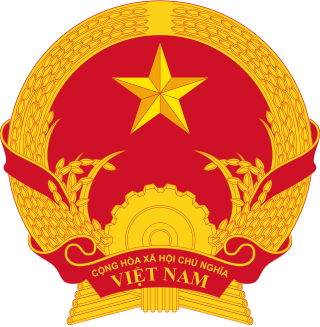
The World Bank’s assistance program of foreign aid to Vietnam has three objectives: to support Vietnam's transition to a market economy, to enhance equitable and sustainable development, and to promote good governance. From 1993 through 2004, Vietnam received pledges of US$29 billion of Official Development Assistance (ODA), of which about US$14 billion, or 49 percent, has been disbursed. In 2004 international donors pledged ODA of US$2.25 billion, of which US$1.65 billion was disbursed. Three donors accounted for 80 percent of disbursements in 2004: Japan, the World Bank, and the Asian Development Bank. During the period 2006–10, Vietnam hopes to receive US$14 billion–US$15 billion of ODA.
Nepal relies heavily on foreign aid, and donors coordinate development aid policy through the Nepal Development Forum, whose members include donor countries, international financial institutions, and inter-governmental organizations. Japan is Nepal's largest bilateral aid donor, and the World Bank and Asian Development Bank are the largest multilateral donors. Donors have been reported as losing confidence in Nepal as a result of political interference and corruption in poverty relief efforts as well as the country's apparently poor capacity to utilize aid. According to World Bank figures, official development assistance increased from US$8.2 million in 1960 to US$369 million in 2003 and then fell to US$177 million in 2004. According to Nepal's Ministry of Finance, total foreign aid committed in fiscal year (FY) 2003 was US$555 million, with 63.3 percent in grants and 36.7 percent in loans. In FY2004, total foreign aid committed was US$320 million, of which 37.7 percent was grants and 62.3 percent, loans. In June 2004, active World Bank credits totaled US$302 million, with the greatest portions allocated to the financial sector and to energy and mining. By the end of 2012, the outstanding World Bank IDA loan totaled $ 1.48 billionArchived 2015-05-05 at the Wayback Machine.

United States foreign aid, also known as US foreign assistance consists of a variety of tangible and intangible forms of assistance the United States gives to other countries. Foreign aid is used to support American national security and commercial interests and can also be distributed for humanitarian reasons. Aid is financed from US taxpayers and other revenue sources that Congress appropriates annually through the United States budget process. It is dispersed through "over 20 U.S. government agencies that manage foreign assistance programs," although about half of all economic assistance is channeled through the United States Agency for International Development (USAID).
The Republic of Kiribati's per capita Gross National Product of US$1,420 (2010) makes it the poorest country in Oceania. Phosphates had been profitably exported from Banaba Island since the turn of the 20th century, but the deposits were exhausted in 1979. The economy now depends on foreign assistance and revenue from fishing licenses to finance its imports and development budget.
Chinese foreign aid may be considered as both governmental (official) and private development aid and humanitarian aid originating from the People's Republic of China.

The Inter-Governmental Group on Indonesia (IGGI) was established in 1967 as an international consortium of official donors to coordinate the provision of foreign assistance to Indonesia. IGGI was the lead official grouping of donors to Indonesia from 1967 until early 1992 when it was abolished and replaced by the Consultative Group on Indonesia (CGI). For the 25 years up to 1992, IGGI was a key regional institution in Southeast Asia. It helped provide strong international support for Indonesia's economic recovery after the economic difficulties in Indonesia during the period of the Sukarno presidency in 1950s and 1960s.
Debt-trap diplomacy is a term to describe an international financial relationship where a creditor country or institution extends debt to a borrowing nation partially, or solely, to increase the lender's political leverage. The creditor country is said to extend excessive credit to a debtor country with the intention of extracting economic or political concessions when the debtor country becomes unable to meet its repayment obligations. The conditions of the loans are often not publicized. The borrowed money commonly pays for contractors and materials sourced from the creditor country.
The Indian government used to receive foreign aid from various nations and international organisations.
Indian foreign aid is the aid given by the Indian government to other governments. India's major quantum of foreign aid is given to neighbouring countries. According to India's budget in 2021–22, its direct overseas aid stood at ₹18,154 crore (US$2.3 billion). That apart, India also extended a direct line of credit worth $30.66 billion to several foreign countries for developmental projects. The way of providing a much larger share of aid in the form of concessional loans is quite similar to that of China. India has set up 'Indian Agency for Partnership in Development' as a part of Ministry of External Affairs (India) to channelize aid to recipient nations.
The Thilamalé Bridge, also known as the Malé-Thilafushi Bridge and more formally known as the Greater Malé Connectivity Project (GMCP), is a road project currently under construction that aims to link capital Malé with the islands of Villingli, Gulhifalhu and Thilafushi in the Maldives. This project has been said to be "the largest-ever infrastructure project in the Maldives." Once completed the total length of the project would be 6.74 km, of which 3.6 km would be bridges or viaducts over water. Before this, the largest connectivity project in the Maldives was the 1.4 km Chinese-funded bridge connecting Malé to the Maldives airport in Hulhule island, and to the Hulhumale island.











